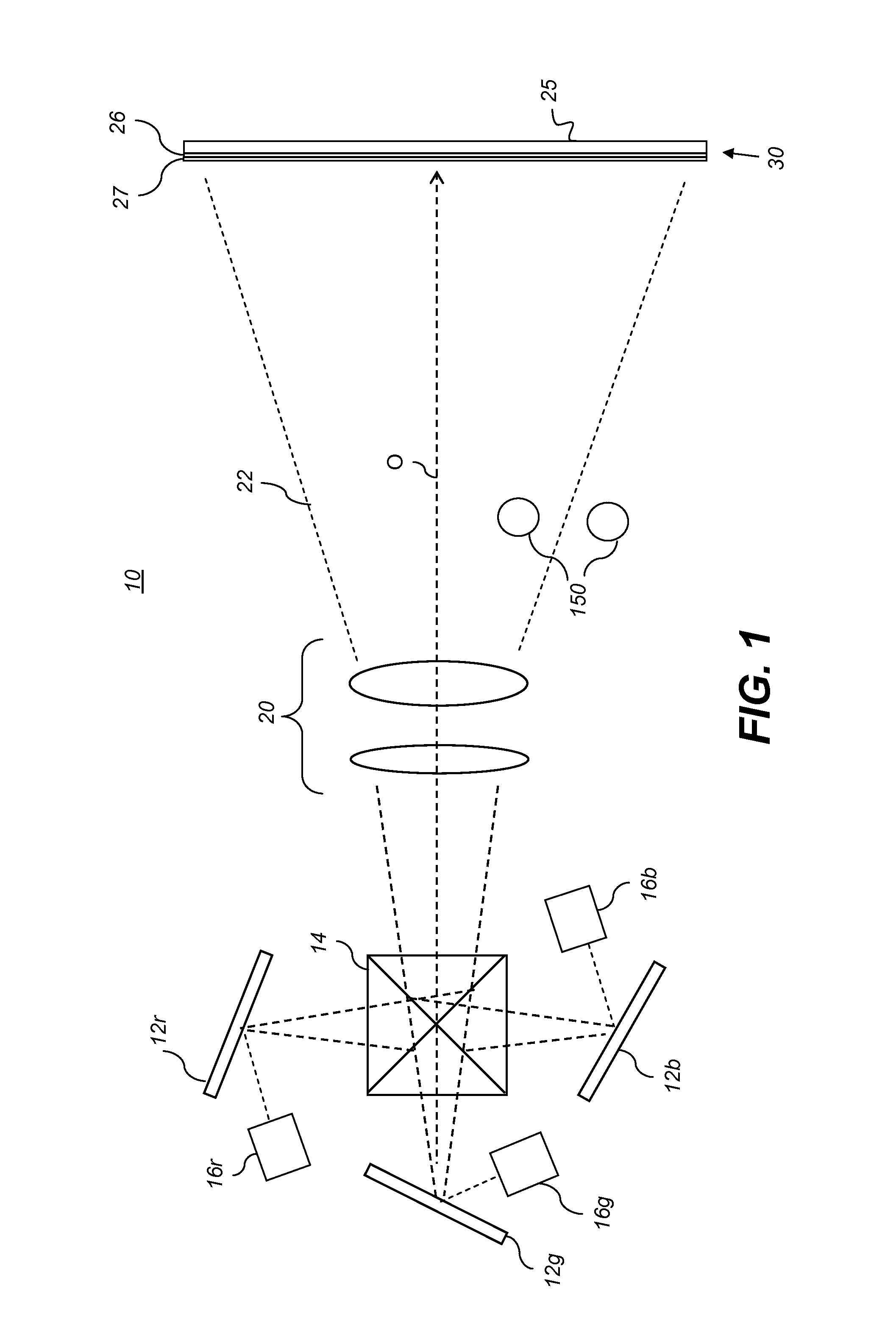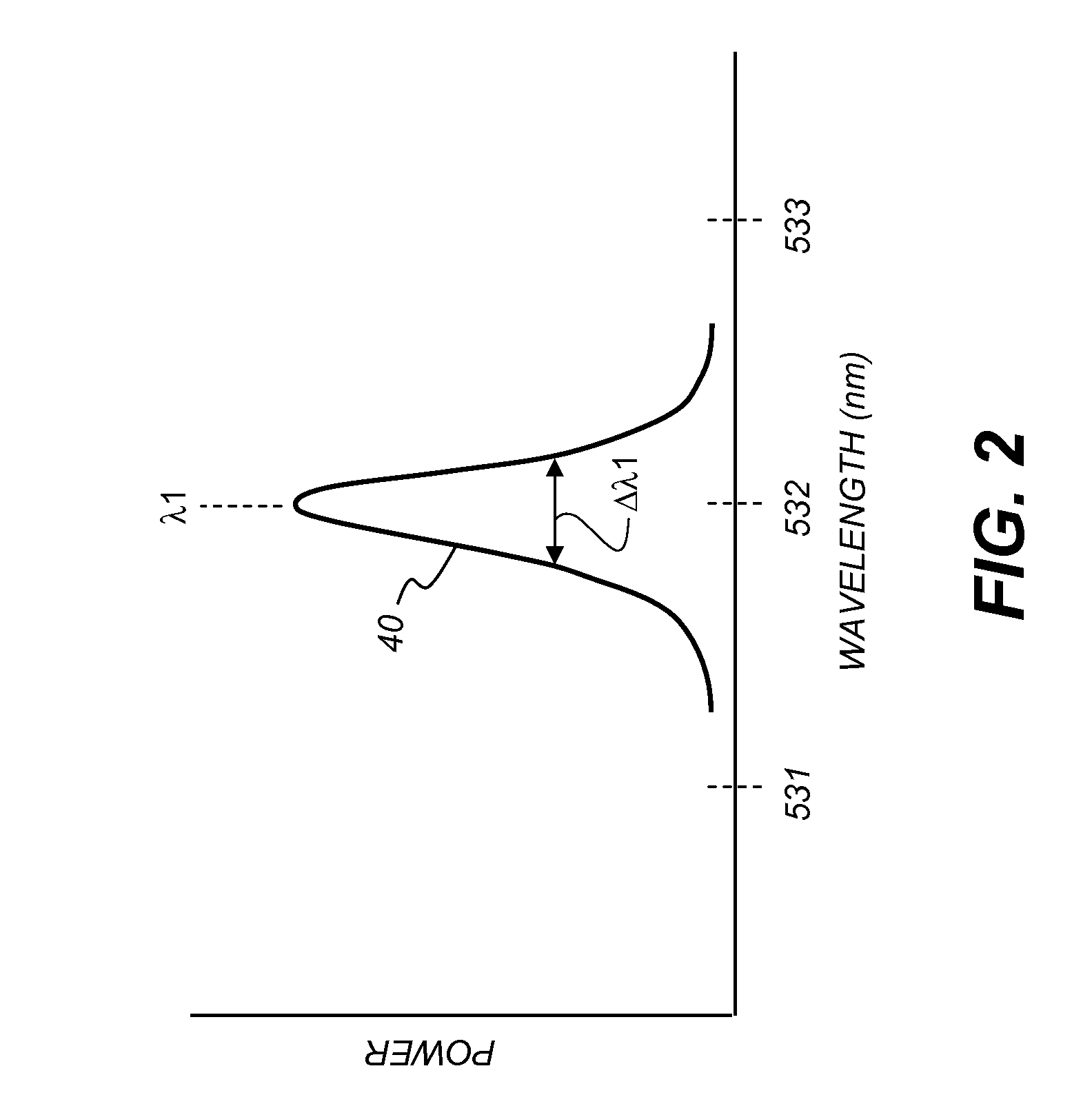Projection display surface providing speckle reduction
a projection display and projection screen technology, applied in projectors, color television details, instruments, etc., can solve the problems of narrow band light source systems, reduce the ability of imaging systems to resolve, and reduce the effective quality of images, so as to reduce the effect of speckle and reduce the impact of image quality
- Summary
- Abstract
- Description
- Claims
- Application Information
AI Technical Summary
Benefits of technology
Problems solved by technology
Method used
Image
Examples
Embodiment Construction
[0062]For the detailed information that follows, it is to be understood that elements not specifically shown or described may take various forms well known to those skilled in the art. Figures shown and described herein are provided to illustrate key principles of operation and component relationships along their respective optical paths according to embodiments of the present invention and may not show actual size or scale. Some exaggeration may be necessary in order to emphasize basic structural relationships or principles of operation.
[0063]Embodiments of the present invention address the problem of speckle reduction by adapting the response of a display screen or other type of display surface to incident narrow band light from a projector. By redistributing a portion of the incident light energy to emissive materials on the display screen surface, embodiments of the present invention effectively expand the spectral bandwidth of the displayed image, thereby reducing speckle artif...
PUM
 Login to View More
Login to View More Abstract
Description
Claims
Application Information
 Login to View More
Login to View More - R&D
- Intellectual Property
- Life Sciences
- Materials
- Tech Scout
- Unparalleled Data Quality
- Higher Quality Content
- 60% Fewer Hallucinations
Browse by: Latest US Patents, China's latest patents, Technical Efficacy Thesaurus, Application Domain, Technology Topic, Popular Technical Reports.
© 2025 PatSnap. All rights reserved.Legal|Privacy policy|Modern Slavery Act Transparency Statement|Sitemap|About US| Contact US: help@patsnap.com



